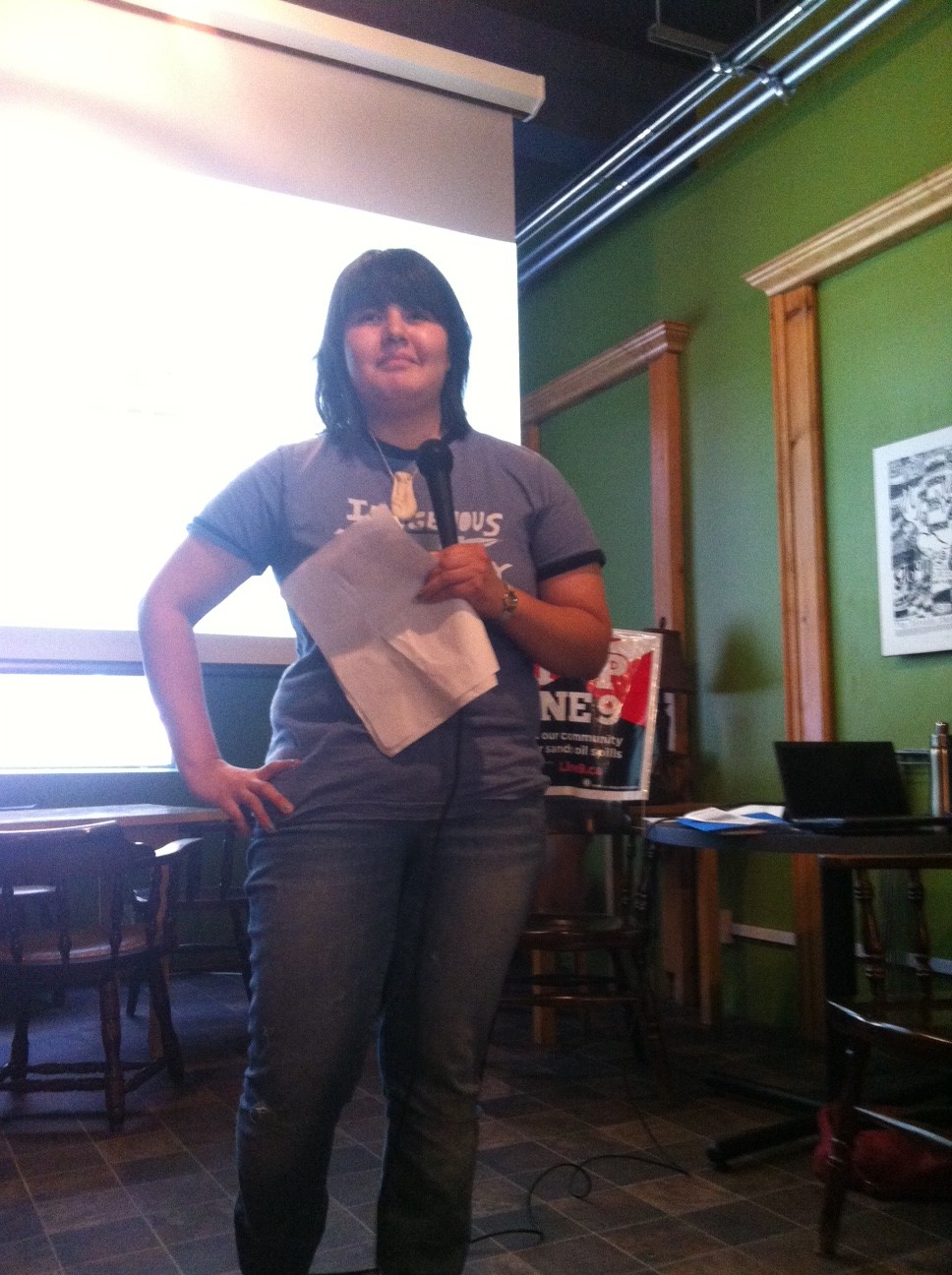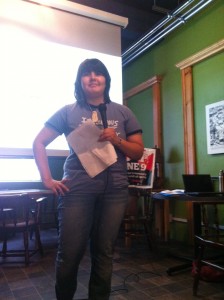Activists combat Line 9 plan


On Sept. 14, a public forum took place at the Queen Street Commons Cafe in downtown Kitchener to discuss issues surrounding provincial pipelines and to inform the public about proposed changes to Line 9, an Enbridge pipeline that runs through Waterloo Region.
Diane Meredith, a representative from Toronto Against Line 9 and the chair at Justice and Community Engagement Centre, explained that “[Line 9] is a 38-year-old pipeline that is used to ship crude and conventional oil.”
“The pipe currently travels from Montreal to Westover [near Hamilton]. Enbridge’s current proposal is [that] instead of [the pipeline] going east to west, they want it to go west to east”, Meredith continued.
The first phase of the reversal, altering the flow of oil between Sarnia and North Westover, was granted conditional approval in 2012.
Hearings by the National Energy Board are going to be held in Toronto and Montreal in October to potentially approve the rest of the reversal, the section of Line 9 that runs between North Westover and Montreal, and to allow Enbridge to increase the capacity of the pipelines.
A source of concern is that, potentially, the pipeline may then be used to transport heavy crude oil and diluted bitumen from Alberta’s tar sands through the pipeline. According to activists, the existing infrastructure may not be able to accommodate the new substance, which is heavier, more acidic and has to be pumped in at a higher pressure.
They warn that this could potentially result in a line burst, causing millions of dollars in damage.
Erin Pope, also from Toronto Against Line 9, spoke to the audience about the impact of the tar sands.
“The tar sands production uses as much water as 1.7 million Canadians would use in a year. 95 per cent of the water used is too toxic to be released back into the environment so [the water] sits in sledge ponds…which are so gigantic that birds and other wild life mistake it for a pond and die in it,” she explained.
Many Indigenous communities are concerned about the pipeline, which passes through 14 aboriginal communities.
Lindsay Gray, who belongs to the Aamjiwnaang First Nation, is directly impacted by the pipe line and oil industry everyday.
“Aamjiwnaang is surrounded by 63 industry plants in the 25 kilometer radius… it’s our backyard, its our backdrop” Gray stated.
As a child, Gray “thought [the plants] were cloud makers, because you see stacks rising into the sky puffing this white smoke into the clouds.”
She added that she thought her “ science teacher was lying when they said [clouds] was made from water.”
Gray, when visiting other communities with her family, was very surprised that the industry plants were nowhere in sight. “I thought it was so common for a city to have an industry backdrop,” she said.
All of the speakers agreed that Canada has to stand up for itself and not allow Enbridge to proceed with their plans for the pipe line.
For more information, go to www.noline9wr.ca.


